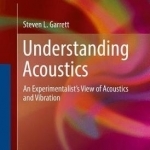Understanding Acoustics: An Experimentalist's View of Acoustics and Vibration
BookThis item doesn’t have any media yet
2017 | Science & Mathematics
This textbook provides a unified approach to acoustics and vibration suitable for use in advanced undergraduate and first-year graduate courses on vibration and fluids. The book includes thorough treatment of vibration of harmonic oscillators, coupled oscillators, isotropic elasticity, and waves in solids including the use of resonance techniques for determination of elastic moduli. Drawing on 35 years of experience teaching introductory graduate acoustics at the Naval Postgraduate School and Penn State, the author presents a hydrodynamic approach to the acoustics of sound in fluids that provides a uniform methodology for analysis of lumped-element systems and wave propagation that can incorporate attenuation mechanisms and complex media. This view provides a consistent and reliable approach that can be extended with confidence to more complex fluids and future applications.
Understanding Acoustics opens with a mathematical introduction that includes graphing and statistical uncertainty, followed by five chapters on vibration and elastic waves that provide important results and highlight modern applications while introducing analytical techniques that are revisited in the study of waves in fluids covered in Part II. A unified approach to waves in fluids (i.e., liquids and gases) is based on a mastery of the hydrodynamic equations. Part III demonstrates extensions of this view to nonlinear acoustics. Engaging and practical, this book is a must-read for graduate students in acoustics and vibration as well as active researchers interested in a novel approach to the material.
Related Items:
| Published by | Springer International Publishing AG |
| Edition | Unknown |
| ISBN | 9783319499765 |
| Language | N/A |
Images And Data Courtesy Of: Springer International Publishing AG.
This content (including text, images, videos and other media) is published and used in accordance
with Fair Use.
